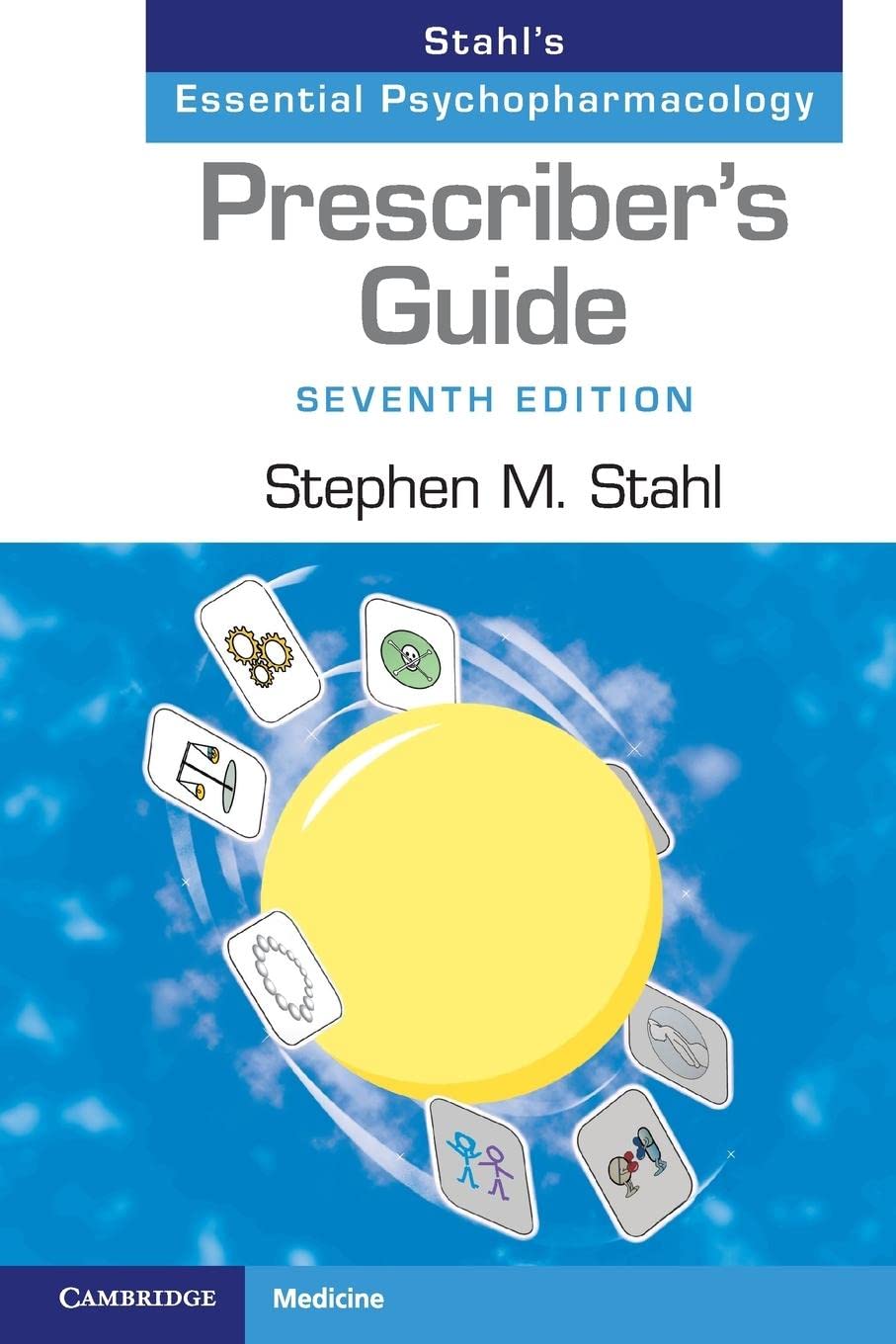Prescriber’s Guide: Stahl’s Essential Psychopharmacology 7th Edition Test Bank
- Instant Delivery Digital download
- Publisher : Cambridge University Press; 7th edition (November 19, 2020)
- Language : English
- ISBN-10 : 1108926010
- ISBN-13 : 978-1108926010
In Stock
Original price was: $55.00.$25.00Current price is: $25.00.
Prescriber’s Guide: Stahl’s Essential Psychopharmacology 7th Edition Test Bank
Table of Contents
Test Bank for Prescriber’s Guide: Stahl’s Essential Psychopharmacology, 7th Edition
The “Test Bank for Prescriber’s Guide: Stahl’s Essential Psychopharmacology, 7th Edition” is an invaluable resource designed to enhance the learning and teaching of psychopharmacology. This comprehensive test bank complements the textbook by providing a variety of questions that assess and reinforce students’ understanding of the essential principles and practices of psychopharmacology. Here is a detailed overview of the components and benefits of this test bank:
Overview of Test Bank Content
- Chapter-by-Chapter Organization
- The test bank is meticulously organized to correspond with each chapter of the textbook, ensuring thorough coverage of all critical topics in psychopharmacology. This structure facilitates easy integration into the curriculum and enables targeted assessments.
- Types of Questions
- Multiple-Choice Questions (MCQs): These questions test a broad spectrum of knowledge, from basic recall to complex application and critical thinking. They include well-crafted distractors to challenge students’ understanding and reasoning.
- True/False Questions: These questions evaluate students’ ability to differentiate between correct and incorrect statements, reinforcing factual knowledge and addressing common misconceptions.
- Fill-in-the-Blank Questions: These questions focus on recalling specific details such as drug names, mechanisms of action, and therapeutic indications, testing students’ memory and understanding.
- Short Answer Questions: These questions require detailed yet concise responses, evaluating students’ ability to explain psychopharmacological concepts clearly and accurately.
- Essay Questions: These questions assess students’ ability to synthesize and articulate complex ideas, demonstrating a deep understanding of psychopharmacological principles and their clinical applications.
- Difficulty Levels
- Questions are categorized by difficulty to provide a range of challenges and assess students’ proficiency at different levels. This includes:
- Basic: Testing foundational knowledge and comprehension.
- Intermediate: Requiring application of knowledge to clinical scenarios.
- Advanced: Involving critical thinking, analysis, and synthesis of complex information.
- Questions are categorized by difficulty to provide a range of challenges and assess students’ proficiency at different levels. This includes:
- Core Focus Areas
- Fundamentals of Psychopharmacology: Questions covering the basic principles, including pharmacokinetics, pharmacodynamics, and the mechanisms of drug action.
- Medication Management: Detailed coverage of the use of medications for various psychiatric disorders, including dosages, side effects, and drug interactions.
- Therapeutic Indications: Assessing knowledge of the therapeutic uses of psychotropic medications, including indications for specific disorders such as depression, anxiety, schizophrenia, and bipolar disorder.
- Adverse Effects and Monitoring: Questions related to the identification and management of adverse effects, as well as the monitoring of medication efficacy and safety.
- Clinical Application: Real-world scenarios and case studies requiring students to apply their psychopharmacological knowledge to patient care situations, enhancing critical thinking and decision-making skills.
- Ethical and Legal Considerations: Questions focusing on the ethical and legal aspects of prescribing psychotropic medications, including informed consent and off-label use.
- Alignment with Learning Objectives
- Each question in the test bank is aligned with the learning objectives outlined in the textbook, ensuring that assessments are relevant and targeted towards achieving the intended educational outcomes. This alignment helps in accurately measuring students’ progress and comprehension.
- Educational Support and Utility
- For educators, the test bank provides a comprehensive resource for creating quizzes, exams, and other assessments. It simplifies the process of test creation and ensures consistency and alignment with the curriculum.
- For students, the test bank serves as a valuable tool for self-assessment and study, helping them identify areas of strength and weakness and focus their efforts on areas needing improvement.
Benefits of Using the Test Bank
- Enhanced Learning and Retention
- The diverse range of question types and difficulty levels helps reinforce learning through varied and repeated exposure to key concepts, enhancing retention and understanding.
- Preparation for Clinical Practice
- By focusing on real-world scenarios and clinical applications, the test bank prepares students for the practical aspects of psychopharmacology, ensuring they are ready to handle the complexities of prescribing medications in clinical settings.
- Comprehensive Assessment
- The test bank allows for thorough and multi-faceted evaluation of students’ knowledge and skills, from basic understanding to advanced application, ensuring a well-rounded educational experience.
- Efficient Teaching Resource
- For educators, the test bank simplifies the process of creating assessments, providing a consistent and reliable tool for evaluating students’ progress and readiness for clinical practice.
Conclusion
The “Test Bank for Prescriber’s Guide: Stahl’s Essential Psychopharmacology, 7th Edition” is an essential resource for the study and teaching of psychopharmacology. It provides structured, comprehensive, and versatile tools for assessing and enhancing students’ knowledge and skills in this critical area of psychiatry and psychology. By aligning closely with the textbook and emphasizing real-world application, the test bank supports the development of competent, confident professionals ready to effectively manage the pharmacological treatment of psychiatric disorders.


Reviews
There are no reviews yet.